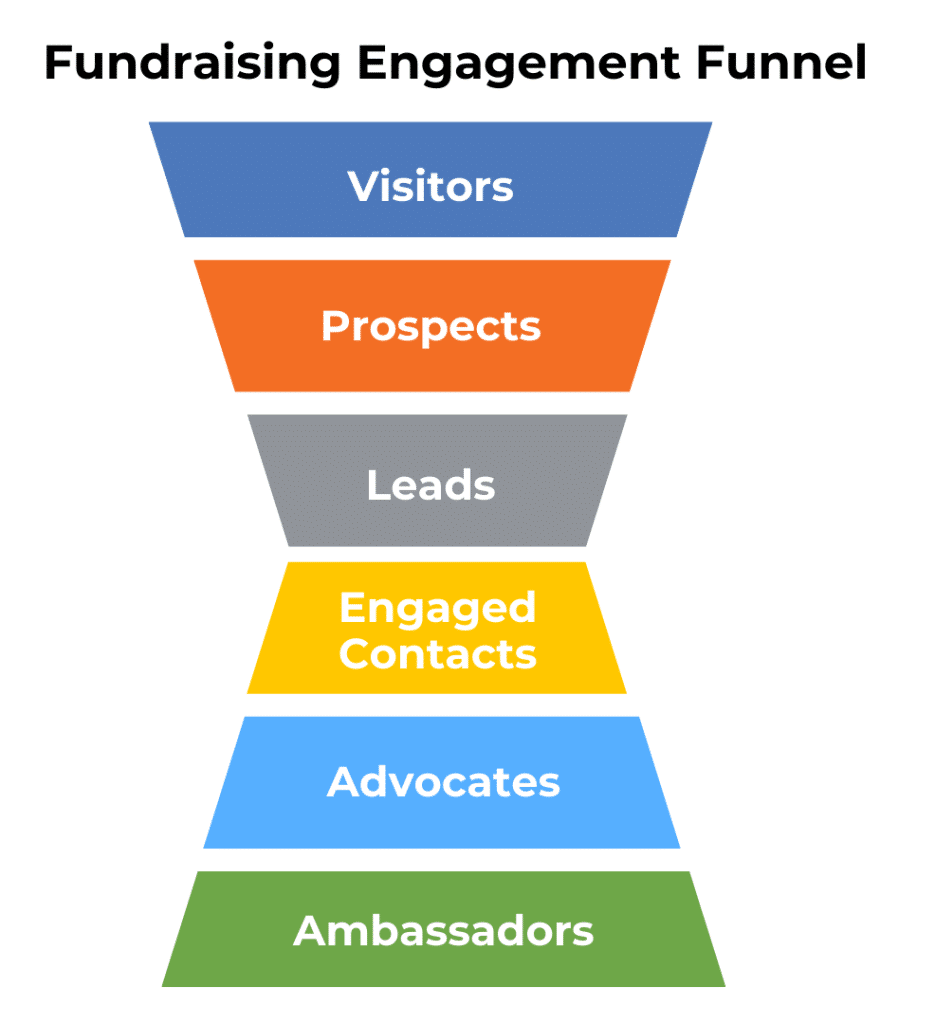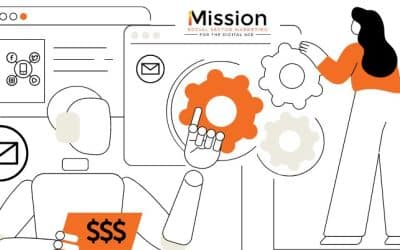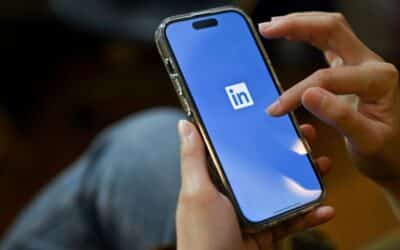They’re out there by the hundreds, maybe by the thousands. Your potential donors. These are people who are sure to be moved by your mission. They are certain to be compelled by your cause.
But they might not even know you exist.
Even if they do, without a clear plan to bring them from the “awareness” stage to the point where they are ready to give, these potential donors will stay in the periphery, never moving forward and taking action.
The path to individual philanthropy is, of course, individual. But in most cases, it is a long journey with many touch points. Not many donors will open their pocketbooks the first time they hear about your organization — especially not for a large donation.
Marketing automation software lets us nurture our audience members, sending them specific messages and prompting specific actions, depending on whatever criteria we determine.
Below, we’ll walk through the strategy behind marketing automation so you can see how the right software platform can help you turn a potential donor into a true ambassador for your organization.
Your fundraising engagement strategy
The for-profit world has long used the image of a funnel to describe a customer’s journey. The top of the funnel, where it is widest, represents the full audience — everyone who has been reached by the brand’s marketing efforts. Of those, some will move down the funnel to become contacts. Some contacts will become leads. Some leads will move down to become customers.
Nonprofits can use a similar funnel analogy to plan their marketing and track their engagement.
Imagine it like this:

Each section of the funnel represents a different stage in a patron’s progress. At each stage, some opt out and some move forward.
And just like repeat customers in the for-profit world, your relationship with each donor doesn’t end with a single donation. Some donors become true ambassadors who donate regularly, volunteer their time, and rally others to the cause.
Remember that it’s called a funnel for a reason. Not everyone passes from one stage to the next. There are fewer prospects than there are visitors, for example. Fewer leads than there are prospects. And, although we’ve made the “advocates” and “ambassadors” stages bigger in the diagram, that’s because of their outsized influence, not their actual numbers. Of all the stages listed, you will have the fewest ambassadors — but they are of enormous importance.
But for now, let’s turn our attention to the very top of the funnel and examine how each group moves into the next.
Visitors
First off are called visitors, but don’t just think of them as visitors to your website. These can be people who come across your content anywhere. They might like your social media posts or watch your YouTube videos, or they might come to your actual website.
The idea behind your marketing should be to attract as large a number of visitors as possible — at least within reason — and invite them to take a low-stakes action (think: signing up for your newsletter) in exchange for their contact information. This way, you get them to engage with your organization in a way that doesn’t feel overwhelming.
(However, be sure that you’re providing value and building trust from the earliest stages. Spamming an inbox or rushing them forward are certain to do more harm than good.)
Once you have a visitor’s contact information, you can track their behavior on your site, put them into email nurture campaigns, and keep them engaged with your organization. Once they’ve crossed this threshold, they become prospects.
Prospects
Some visitors will become prospects, and it’s up to your organization to determine what criteria differentiates one from the other.
In some cases, a visitor might opt in to becoming a prospect. Maybe they check a box saying they want to be contacted about a certain program. Maybe they download a specific resource.
In other cases, you can use lead scoring functions to evaluate when someone crosses over. Lead scoring works by assigning value to certain website-related actions. Once a visitor reaches a certain score, they pass from a visitor to a prospect in your contact list. For example, it might be because they visit a certain number of pages or return to your site a certain number of times.
Your prospects have shown that they may want to contribute to your cause, and you should communicate with them in a way that builds interest, confidence, and trust.
For example, if you’re a local land trust, you might send out information about a new property, or a recent trail clean-up effort. The right communication will build a strong relationship that allows the prospect to see your organization as trustworthy and vital. At this point, you’re “earning the right to ask” for them to take meaningful action in the future.
Leads
An engaged prospect can become a lead. A lead is someone you can compel to take a meaningful action — like making a first financial donation.
This is an important touchpoint, and you don’t want to get it wrong. Asking for a donation too early can destroy trust, asking too late can mean you miss your window. The key is making it easy for leads to donate on their own terms, whether they want anonymity or recognition, whether they prefer Venmo or dropping a check in the mail.
Engaged contacts
A single action is nice, but that’s a one-time thing. A second action means so much more.
Once someone donates a second time, they’ve crossed into different territory. We call these engaged contacts because they are engaged with the mission of your organization. Likely, they see your values aligning with their own, and, if you nurture the relationship, they could give repeatedly over the course of their lifetime.
Engaged contacts deserve an elevated level of attention.
With the right strategy, you can turn someone at this stage into a true advocate for your organization who spreads word-of-mouth endorsements to family and friends.
Advocates
Engaged contacts transform to advocates when they eagerly search for new ways to support your organization. Think of a donor becoming a volunteer, or a volunteer becoming an organizer.
Savvy organizations help advocates find ways to be a part of the effort.
Ambassadors
At this point, the relationship has reached its zenith. True ambassadors are deeply committed to your organization — spreading goodwill and rallying their networks to your mission. In many cases, they see your cause as a movement that’s deeply personal to them.
Your ambassadors are your superstars. They will proudly represent you and your organization, and they are vital to your long-term growth. Remember, no marketing in the world is as powerful as word-of-mouth, and a single engaged ambassador can bring in more prospects than dozens, even hundreds of ads.
* * *
With these details spelled out, let’s take another look at that funnel diagram, this time with explainer text included.

It’s easy to think of marketing as a broad-based approach designed to spread the word about your organization. And it is, but if you only focus on top-of-the-funnel content, you’ll spread awareness while ignoring the needs of other stages of the giver’s journey.
As you’re planning your marketing, use this diagram to develop nurture campaigns, social media content, reengagement efforts, and other approaches to grow your nonprofit.
With all that said, there are real opportunities that exist beyond and outside this funnel, as we’ve conceived it.
It’s important to think creatively about how to reach that broad audience of potential donors.
The promise of potential donors
Think of those potential donors out there who have never heard of you or what you do. They are unaware of you — but you are equally unaware of them. At this point, there is no relationship.
In almost all cases, the donors will learn that you exist long before you learn that they exist. This is an important, but often frustrating, point. It means despite all the data offered by digital platforms, you’ll still struggle to accurately track your reach.
For this reason, it is imperative that you invest in outreach and marketing to continually put yourself in front of would-be givers.
An emphasis on multi-channel marketing
To reach a diverse, multi-generational audience, you’ll need to invest in multi-channel marketing that puts your message in front of the right people in the places where they spend time.
Sure, there are paid media type spots like social media and search ads, but that’s just scratching the surface. Modern nonprofit marketing is more akin to PR — organic social content, appearances on podcasts and other programs, press and media coverage, user-generated content, and more.
Diverse marketing has a wide reach — and authentic marketing builds trust and fills the funnel. As you plan your strategy, think creatively about the ways a person can learn about your cause.
The importance of discovery platforms (i.e. social media)
When you type a question into Google, you have some idea of what you are looking for, even if it’s vague. You have some need that’s brought you there.
When you are on social media, you’re in a different headspace. Social media, broadly defined, is about discovery, not about searching.
You’re there to scroll through and see what you find, based on your likes, your demographics, and the accounts you’ve connected with. That means you get served up a feed that includes organic content, recommended content, and ads.
It could be a video of your sister’s vacation, a political donation request, and pictures of a humanitarian crisis, all back to back. But that’s what you expect because you’re in a mindset to discover.
Marketers call social media sites discovery platforms.
Content that lives on discovery platforms can reach people who are in a different mindset from the search engine user.
They’re pre-awareness.
This makes social media a goldmine for connecting to those potential donors who have no idea your organization exists.
The right social content can fill the top of the funnel with those elusive potential donors who have the potential to become your next ambassadors — once they learn you exist.
The long journey of the future ambassador
Imagine a large park in the full splendor of summer. The air carries laughter and birdsong. Huge trees dot the grassy landscape, offering shade for picnics. Those grand old trees are precious, yet they’re vulnerable to storms and insect damage.
If you lose that massive spreading oak tree, the park will never be the same. It will take a hundred years to grow another just as big.
The wise park ranger knows this — and knows that you always need to be planting new trees so that the ones to replace the big ones are not so far behind. A healthy park is full of trees, some big, some small. As one park ranger once put it, only one-quarter of your park’s trees should be in the last quarter of their lives. The rest need to be younger so that when one dies, whether big or small, its loss is not so significant. The park remains. If a park is full of late-stage trees and nothing else, the park is in peril.
A nonprofit with an older base of ambassadors is equally perilous.
Your donor base, like the park, requires constant effort.
At all times, you must be working to spread awareness to the masses, bringing them into the fold. At the same time, you need to build trust with the top-of-the-funnel audience, inspire action among your prospects and leads, and guide your advocates and ambassadors to make meaningful contributions.
That ambassador whose patronage is so critical to your success was once a person who had never heard of you.
The right marketing plan shepherds future ambassadors through all stages of the giver’s journey, just as the park ranger plants trees today that will not offer shade for decades.
Want to learn more about how marketing automation can help your nonprofit? Contact us! Or visit the link here.
Marketing automation will let you find new donors, volunteers, and clients – and more quickly and successfully move them to action. Our Ultimate Guide to Marketing Automation for Nonprofits shows you, step-by-step, how your organization can take your marketing to a whole new level.

About iMission Institute
iMission is a full-service marketing and stakeholder engagement agency. We work exclusively with mission-driven organizations. We are proud to be a leading nonprofit CRM consultant offering expertise in CRM architecture, workflow process solutions, and client training. Our team has deep experience in Salesforce’s Nonprofit Success Pack (NPSP), Marketing Cloud, Experience Cloud, Service Cloud, Education Cloud, Marketing Cloud Account Engagement/Pardot, Einstein Artificial Intelligence (AI), data integrity, and dozens of application integrations. We support and grow our client’s capabilities in advocacy, case management, donor management, grants management, community portals, automated communications, and more. Our clients include nonprofit organizations, health systems, school districts, municipalities, and social enterprises. Contact us to learn more about how we can assist your organization today!



